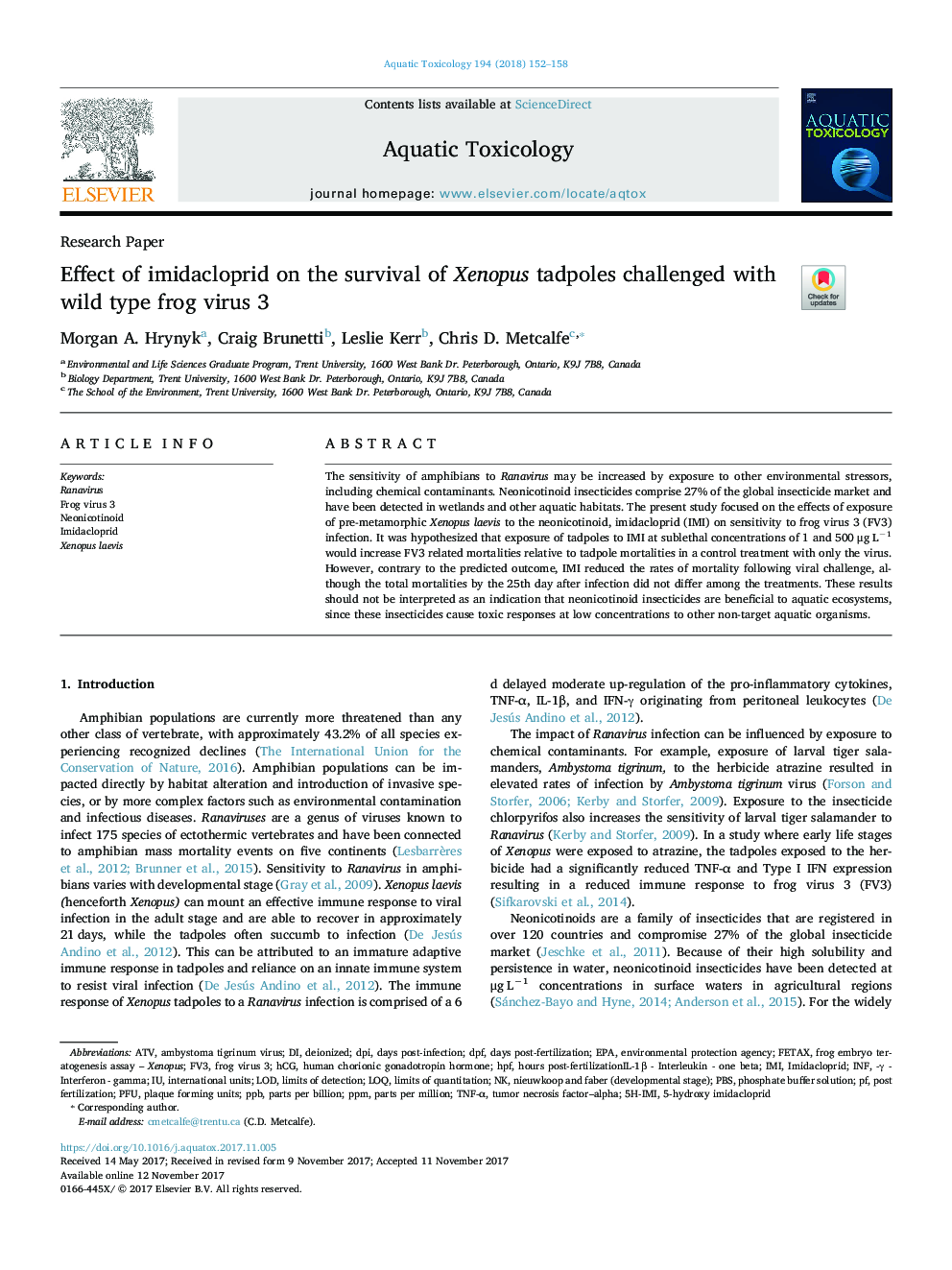| Article ID | Journal | Published Year | Pages | File Type |
|---|---|---|---|---|
| 8883903 | Aquatic Toxicology | 2018 | 7 Pages |
Abstract
The sensitivity of amphibians to Ranavirus may be increased by exposure to other environmental stressors, including chemical contaminants. Neonicotinoid insecticides comprise 27% of the global insecticide market and have been detected in wetlands and other aquatic habitats. The present study focused on the effects of exposure of pre-metamorphic Xenopus laevis to the neonicotinoid, imidacloprid (IMI) on sensitivity to frog virus 3 (FV3) infection. It was hypothesized that exposure of tadpoles to IMI at sublethal concentrations of 1 and 500 μg Lâ1 would increase FV3 related mortalities relative to tadpole mortalities in a control treatment with only the virus. However, contrary to the predicted outcome, IMI reduced the rates of mortality following viral challenge, although the total mortalities by the 25th day after infection did not differ among the treatments. These results should not be interpreted as an indication that neonicotinoid insecticides are beneficial to aquatic ecosystems, since these insecticides cause toxic responses at low concentrations to other non-target aquatic organisms.
Keywords
EPAFETAXFV3ATVinfIMIppbhpfppmDPFDPILOQPBSdeionizedEnvironmental Protection AgencyHCGImidaclopridTumor necrosis factor–alphaLOD یا Limit of detectionRanavirusdays post-infectiondays post-fertilizationTNF-αparts per millionparts per billionFrog Virus 3limits of detectionlimits of quantitationphosphate buffer solutionneonicotinoidXenopus laevisinternational unitsplaque forming unitspfu
Related Topics
Life Sciences
Agricultural and Biological Sciences
Aquatic Science
Authors
Morgan A. Hrynyk, Craig Brunetti, Leslie Kerr, Chris D. Metcalfe,
